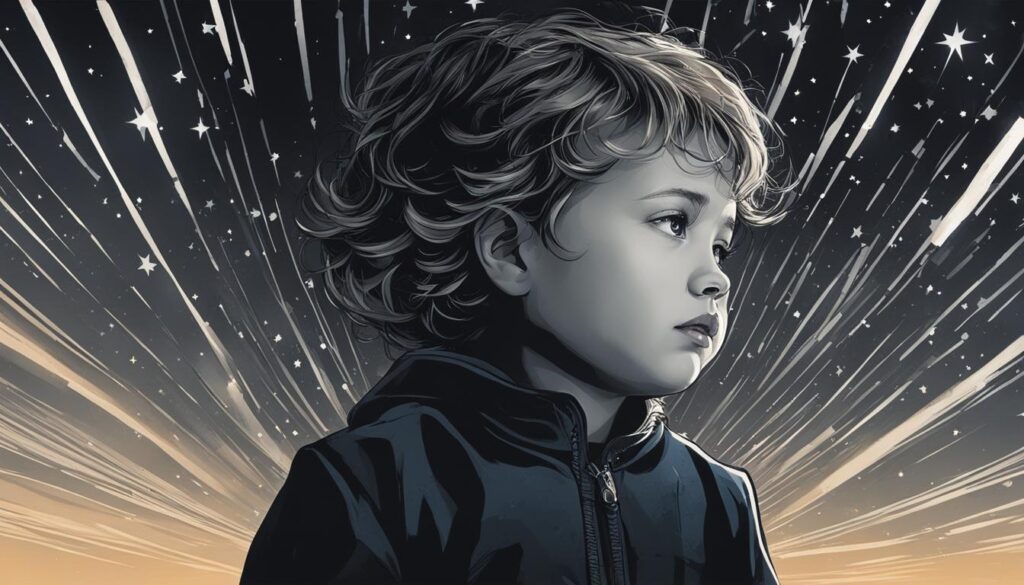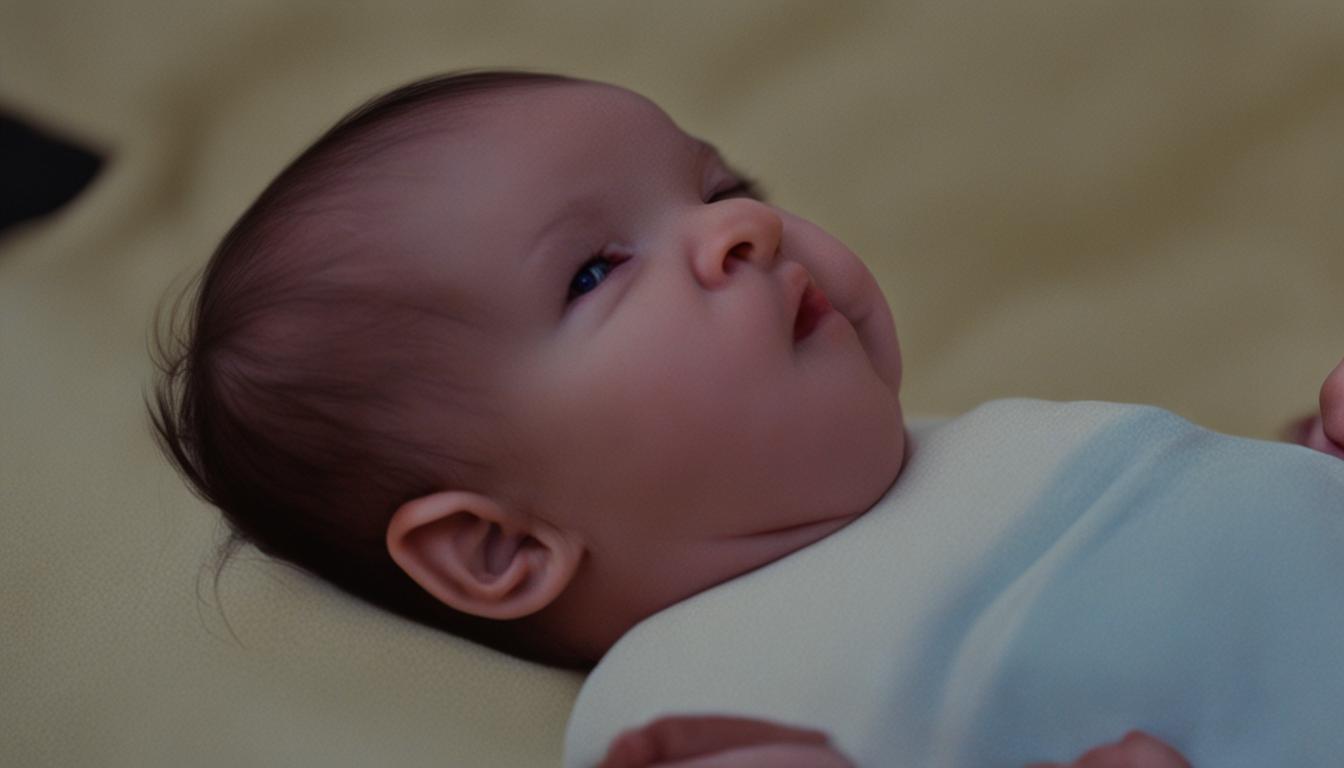Baby Bump On Head Swelling Duration Guide
According to data from the Centers for Disease Control and Prevention (CDC), 6.8% of children reported symptoms of a concussion or brain injury at some point in their lifetime. Pediatric head injuries, ranging from minor bumps to more serious traumatic brain injuries, can be concerning for parents. If your baby has a bump on their head, it’s important to understand the duration of swelling and when to seek medical attention.
When it comes to a baby bump on the head, swelling is a common occurrence. The duration of swelling can vary depending on the severity of the injury. While mild bumps may only cause temporary swelling that subsides within a few hours, more significant injuries can result in swelling that persists for several days.
It’s essential to monitor your baby closely for any changes in behavior, pain, or worsening symptoms. If the swelling increases or your baby exhibits concerning signs such as excessive sleepiness, persistent crying, difficulty waking up, or changes in vision, it is important to seek medical attention immediately.
Skip To The Following Sections
- Common Head Injuries in Kids
- Symptoms of Concussions in Children
- Evaluation and Treatment of Head Injuries
- When to Seek Emergency Medical Help
- Home Care and Monitoring After a Head Bump
- Preventing Head Bumps and Injuries in Babies and Toddlers
- FAQ
- How long does a baby bump on the head take to disappear?
- What are the common head injuries in kids?
- What are the symptoms of concussions in children?
- How are head injuries evaluated and treated?
- When should I seek emergency medical help for a baby or toddler with a head injury?
- How can I care for a baby’s head bump at home?
- How can I prevent head bumps and injuries in babies and toddlers?
- Source Links
Key Takeaways:
- Baby bumps on the head can range from mild to more severe injuries.
- Swelling after a head bump can last from a few hours to several days.
- Monitor your baby for any changes in behavior or worsening symptoms.
- Seek immediate medical attention if the swelling increases or if your baby shows concerning signs.
- Prevent head injuries by taking safety measures such as securing furniture and supervising outdoor play.
Common Head Injuries in Kids
Pediatric head injuries can encompass injuries to the scalp, skull, and brain. Common head injuries in kids include bumps on the head, cuts on the head or scalp, facial or skull fractures, and traumatic brain injuries (TBIs), including concussions. It’s important to assess the severity and location of the injury when deciding whether medical care is necessary. Forehead bumps are usually less concerning for children aged 2 and older, while injuries to other parts of the head may require medical attention.
When a child experiences a head injury, it’s crucial to observe their symptoms and monitor their condition closely. While minor bumps or cuts may heal on their own with home care, more severe injuries like fractures or TBIs may require prompt medical intervention. By understanding the common head injuries that can occur in kids, parents and caregivers can better safeguard their well-being and seek appropriate medical attention when needed.
Symptoms of Concussions in Children

Symptoms of concussions in children can vary and affect their physical, cognitive, and emotional states. It’s important to be aware of these symptoms in order to properly identify and address a possible concussion.
Common Symptoms
- Headaches: Children may experience persistent or recurring headaches after a head injury.
- Nausea or Vomiting: Some children may feel nauseous or vomit following a concussion.
- Dizziness or Balance Problems: Loss of balance or dizziness may be present as a symptom of a concussion.
- Low Energy or Feeling Run Down: Children with concussions may exhibit a lack of energy or constantly feel tired.
- Vision Problems: Blurred or double vision can occur after a head injury.
- Sensitivity to Light or Noise: Bright lights or loud noises can worsen the symptoms of a concussion.
- Sleep Disturbances: Changes in sleep patterns, including trouble falling asleep or excessive sleepiness, may be indicative of a concussion.
- Slowed Thinking or Confusion: A child with a concussion may experience difficulty with thinking or appear confused.
- Irritability or Changes in Behavior: Mood swings, irritability, or behavioral changes can be observed in children with concussions.
In rare cases, a seizure or tonic posturing, which is a brief stiffness or tension in the body, may occur following a concussion. If these severe symptoms are present, immediate medical attention is necessary.
Identifying and recognizing the symptoms of concussions in children is crucial for their well-being. If you notice any of these symptoms or suspect a child may have sustained a head injury, it is important to consult a healthcare professional for a thorough evaluation and appropriate care.
Evaluation and Treatment of Head Injuries

When it comes to head injuries, a prompt and accurate evaluation plays a crucial role in determining the appropriate treatment. The evaluation process involves carefully assessing the cause of the injury, the symptoms experienced, and the timeframe in which these symptoms appear.
Mild head injuries, such as minor bumps or bruises, often require observation and home care. Applying ice to reduce swelling and discomfort, as well as cleaning and bandaging any wounds, can aid in the healing process.
However, more severe head injuries necessitate immediate medical attention. In these cases, healthcare professionals may perform imaging tests like CT scans or MRIs to assess the extent of the injury and identify any underlying complications. These tests provide detailed images of the brain, allowing doctors to make informed decisions regarding treatment.
The treatment options for head injuries depend on the severity of the injury. In mild cases, rest and over-the-counter pain relief medications may be sufficient. On the other hand, more severe injuries may require additional interventions, such as cleaning and suturing wounds, prescribing specific medications, or even surgery in rare cases.
For concussions, a common type of head injury, activity restrictions are typically recommended to allow the brain sufficient time to heal. This includes refraining from activities that may exacerbate symptoms or have a high risk of re-injury. Rest and gradual return to normal activities under medical supervision are essential in managing concussion cases.
“Proper evaluation and treatment of head injuries are crucial in ensuring the best possible outcomes for patients. It’s important to seek medical attention promptly and follow the recommended course of action to facilitate a smooth recovery.”
A comprehensive evaluation and appropriate treatment strategies are instrumental in managing head injuries effectively. By addressing the injury promptly and employing the appropriate therapies, individuals can experience optimal recovery and minimize any potential long-term complications.
If you’re uncertain about the severity of a head injury or have any concerns, it’s always best to consult a healthcare professional for an accurate evaluation and personalized treatment.
Common Signs and Symptoms of Head Injuries:
- Headache
- Nausea or vomiting
- Dizziness or balance problems
- Low energy or feeling run down
- Vision problems
When to Seek Immediate Medical Help:
- Excessive bleeding from a cut
- Bulging soft spot on the skull (in infants)
- Repeated vomiting
- Unusual sleepiness or difficulty staying alert
- Loss of consciousness or unresponsiveness
When to Seek Emergency Medical Help
It is crucial to seek emergency medical help if your baby or toddler shows signs of a severe head injury. Immediate medical attention can make a significant difference in ensuring their well-being. Look out for the following signs:
- Uncontrolled bleeding from a cut: If your child has sustained a head injury and there is excessive bleeding that you are unable to control, seek emergency medical assistance immediately.
- Bulging soft spot on the skull: A bulging or swollen fontanelle (soft spot) on your baby’s head could be a sign of increased pressure inside the skull, indicating a possible severe head injury.
- Excessive bruising and swelling: Severe bruising or swelling on the head, face, or neck may require urgent medical attention.
- Repeated vomiting: If your child experiences frequent episodes of vomiting after a head injury, it is important to seek medical assistance to rule out any potential complications.
- Unusual sleepiness or difficulty staying alert: If your baby or toddler exhibits extreme sleepiness, difficulty staying awake, or appears unusually lethargic, it could be a sign of a severe head injury.
- Loss of consciousness or unresponsiveness: Any loss of consciousness or unresponsiveness following a head injury should be treated as a medical emergency.
- Blood or fluid draining from the nose or ears: If you notice blood or fluid coming from your child’s nose or ears after a head injury, seek immediate medical attention as it could indicate a serious injury.
- A seizure: If your baby or toddler experiences a seizure following a head injury, call for emergency help without delay.
- Suspected neck or spinal cord injury: If you suspect a neck or spinal cord injury, it is imperative to seek immediate medical attention to prevent further complications.
- Trouble breathing: If your child experiences breathing difficulties after a head injury, do not hesitate to call for emergency medical help.
- Pale appearance: If your baby or toddler appears pale or exhibits changes in skin color following a head injury, seek immediate medical assistance.
If your child shows any of these signs, do not delay seeking emergency medical help. Remember, the prompt assessment and intervention by medical professionals can ensure the best possible outcome for your child’s health and well-being.
Home Care and Monitoring After a Head Bump
For mild head injuries, home care and monitoring are typically sufficient.
After a head bump, you can take the following steps to ensure your baby’s well-being:
- Applying ice to the affected area as tolerated by the baby can help reduce swelling. Remember to wrap the ice pack in a cloth or towel to protect the skin.
- Cleaning and bandaging minor cuts or abrasions can help prevent infection. Use a mild antiseptic and non-stick bandages.
- Check for changes in pupil size. If one pupil appears larger than the other, it could be a sign of increased pressure in the skull.
- Monitor your baby’s sleep patterns. It’s normal for babies to sleep more than usual after a head injury, but you should still keep an eye out for any unusual changes.
When to Seek Medical Attention:
While home care is often enough for mild head injuries, it’s important to be vigilant for any changes in behavior or neurological deficits within 48 hours of the injury. If you notice any of the following symptoms, please seek medical attention:
- Worsening headache or persistent vomiting
- Loss of balance or coordination
- Changes in vision
- Behavioral changes such as irritability or confusion
It’s always better to err on the side of caution when it comes to your baby’s well-being.
Remember, every head injury is unique, and if you’re unsure about the severity of the injury or have any concerns, it’s best to consult with a pediatrician for guidance. Your baby’s health and safety are our top priorities.
Preventing Head Bumps and Injuries in Babies and Toddlers
When it comes to your little one’s safety, taking preventive measures to reduce the risk of head bumps and injuries is crucial. By implementing a few simple strategies, you can create a safer environment for your babies and toddlers.
Start by installing baby gates at the top and bottom of staircases to prevent falls. Additionally, using non-slip mats in the bathtub can help prevent slips and head injuries during bath time. Secure furniture to the walls to avoid tipping accidents, especially as your little one begins to explore their surroundings.
It’s important to keep dangerous objects out of reach to prevent injuries. Store household chemicals, cleaning supplies, and medications in locked cabinets. Avoid using infant walkers, as they can increase the risk of falls and head injuries. Instead, opt for stationary activity centers that provide a safe play area.
Supervision is key when it comes to outdoor play. Keeping a close eye on your child can help prevent accidents, such as falls from playground equipment or collisions with other children. Remember to also educate caregivers, such as grandparents or babysitters, about the risks of head injuries and provide resources for support.
FAQ
How long does a baby bump on the head take to disappear?
The duration for a baby bump on the head to disappear can vary. Minor bumps or goose eggs on the forehead usually go away within a week or two. However, it’s essential to monitor the swelling for any changes in size, discomfort, or other concerning symptoms. If the swelling worsens or persists for an extended period, it’s best to consult a healthcare professional for further evaluation.
What are the common head injuries in kids?
Common head injuries in kids include bumps on the head, cuts on the head or scalp, facial or skull fractures, and traumatic brain injuries (TBIs), including concussions. These injuries can occur from falls, accidents, or sports-related activities. It’s important to assess the severity and location of the injury to determine the appropriate course of action, such as seeking medical care or providing home care.
What are the symptoms of concussions in children?
Symptoms of concussions in children can vary and affect physical, cognitive, and emotional states. Some common symptoms include headaches, nausea or vomiting, dizziness or balance problems, low energy or feeling run down, vision problems, sensitivity to light or noise, sleep disturbances, slowed thinking or confusion, irritability, or changes in behavior. In rare cases, a seizure or tonic posturing may occur, necessitating immediate medical attention.
How are head injuries evaluated and treated?
The evaluation of head injuries involves assessing the cause of injury, experienced symptoms, and the timeframe in which symptoms appear. Mild head injuries may only require observation and home care, while more severe injuries may necessitate medical attention, including imaging tests like CT scans or MRIs. Treatment options depend on the severity and may include rest, ice application, wound cleaning and suturing, and activity restrictions for concussions.
When should I seek emergency medical help for a baby or toddler with a head injury?
It is important to seek emergency medical help if a baby or toddler exhibits signs of a severe head injury. These signs may include uncontrolled bleeding from a cut, a bulging soft spot on the skull, excessive bruising and swelling, repeated vomiting, unusual sleepiness or difficulty staying alert, loss of consciousness or unresponsiveness, blood or fluid draining from the nose or ears, a seizure, suspected neck or spinal cord injury, trouble breathing, or pale appearance. Immediate medical attention is crucial in these cases.
How can I care for a baby’s head bump at home?
For mild head injuries, home care and monitoring are typically sufficient. Apply ice as tolerated by the baby, clean and bandage minor cuts or abrasions, check for changes in pupil size, monitor the baby’s sleep patterns, and contact a pediatrician for guidance. However, it is important to be vigilant for any changes in behavior or neurological deficits within 48 hours of the injury and seek medical attention if symptoms worsen.
How can I prevent head bumps and injuries in babies and toddlers?
While head bumps are common in babies and toddlers, there are preventive measures parents can take to reduce the risk of injuries. Installing baby gates, using non-slip mats in the bathtub, securing furniture to walls, keeping dangerous objects out of reach, avoiding the use of infant walkers, and supervising outdoor play are some ways to keep babies and toddlers safe. Educating caregivers about the risks of head injuries and providing resources for support can also contribute to preventing accidents.








